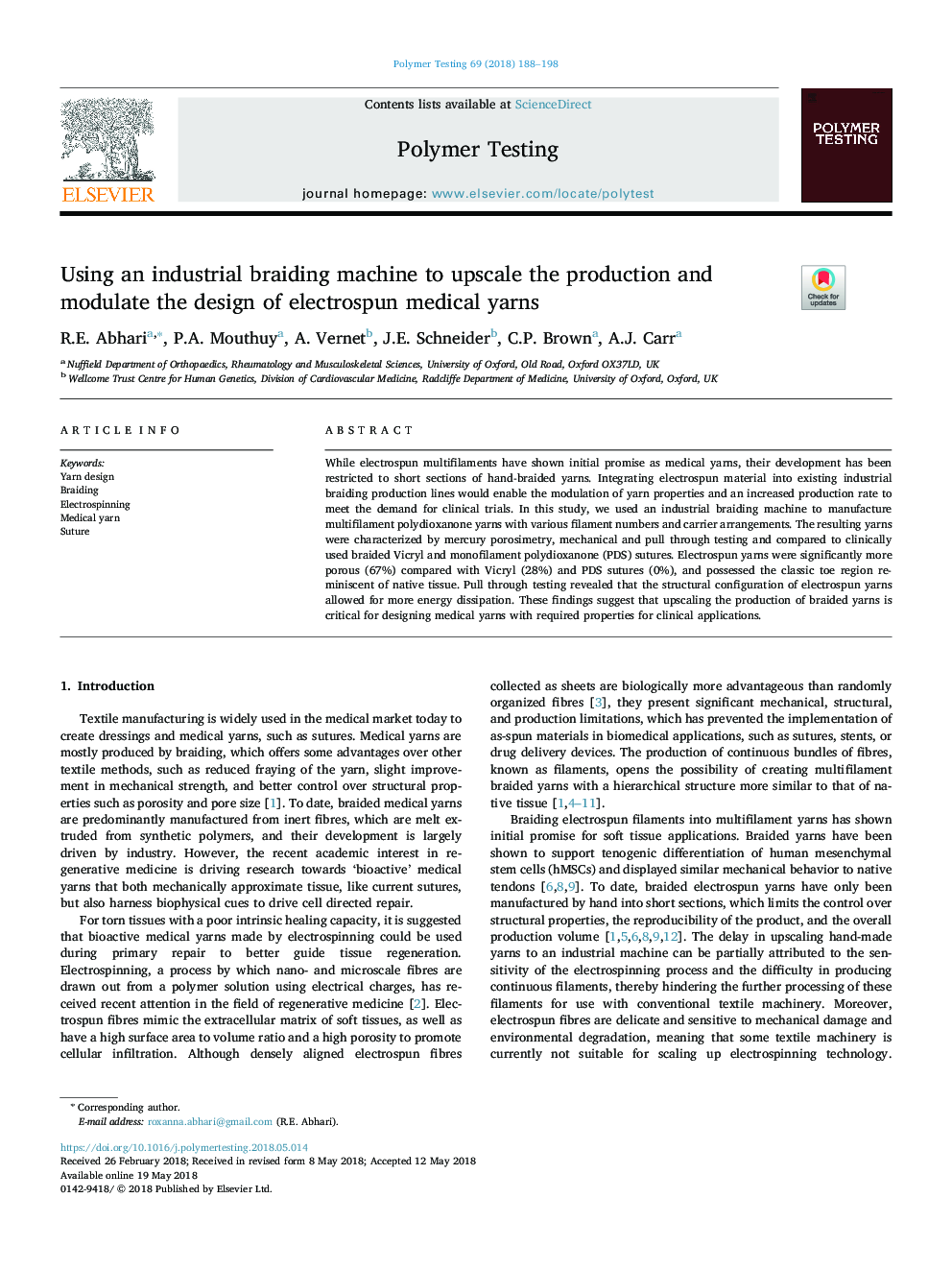| Article ID | Journal | Published Year | Pages | File Type |
|---|---|---|---|---|
| 7824687 | Polymer Testing | 2018 | 11 Pages |
Abstract
While electrospun multifilaments have shown initial promise as medical yarns, their development has been restricted to short sections of hand-braided yarns. Integrating electrospun material into existing industrial braiding production lines would enable the modulation of yarn properties and an increased production rate to meet the demand for clinical trials. In this study, we used an industrial braiding machine to manufacture multifilament polydioxanone yarns with various filament numbers and carrier arrangements. The resulting yarns were characterized by mercury porosimetry, mechanical and pull through testing and compared to clinically used braided Vicryl and monofilament polydioxanone (PDS) sutures. Electrospun yarns were significantly more porous (67%) compared with Vicryl (28%) and PDS sutures (0%), and possessed the classic toe region reminiscent of native tissue. Pull through testing revealed that the structural configuration of electrospun yarns allowed for more energy dissipation. These findings suggest that upscaling the production of braided yarns is critical for designing medical yarns with required properties for clinical applications.
Keywords
Related Topics
Physical Sciences and Engineering
Chemistry
Organic Chemistry
Authors
R.E. Abhari, P.A. Mouthuy, A. Vernet, J.E. Schneider, C.P. Brown, A.J. Carr,
